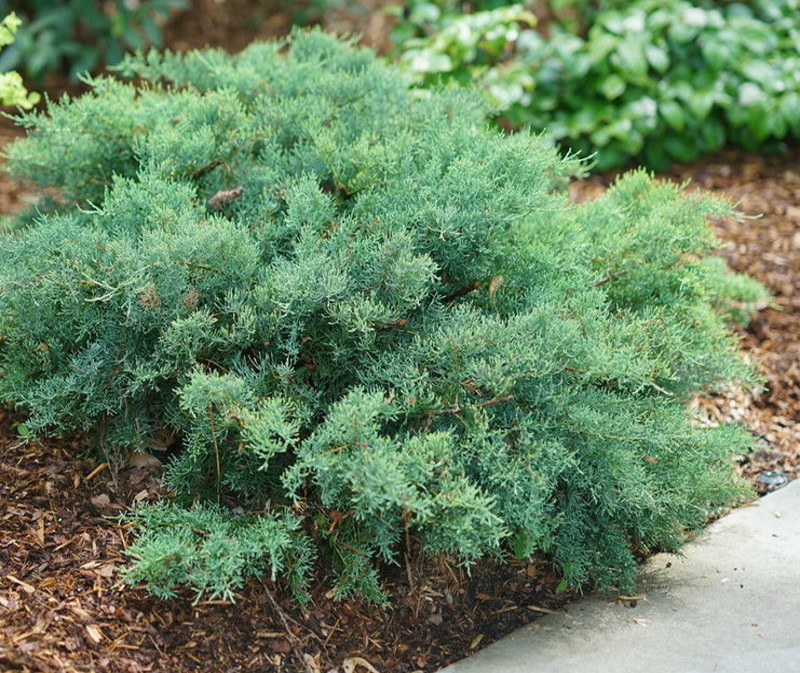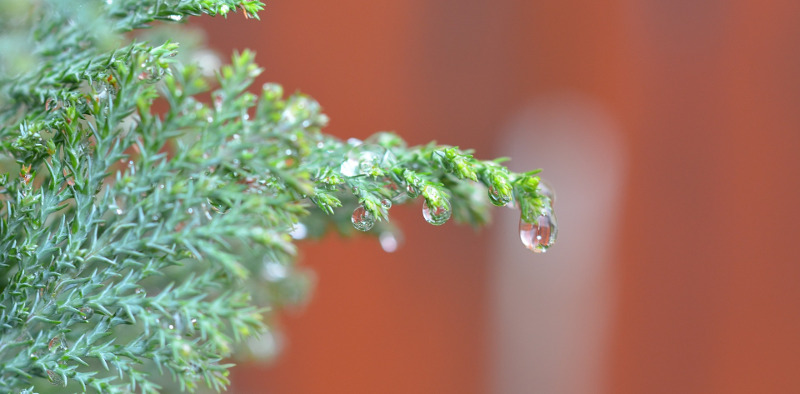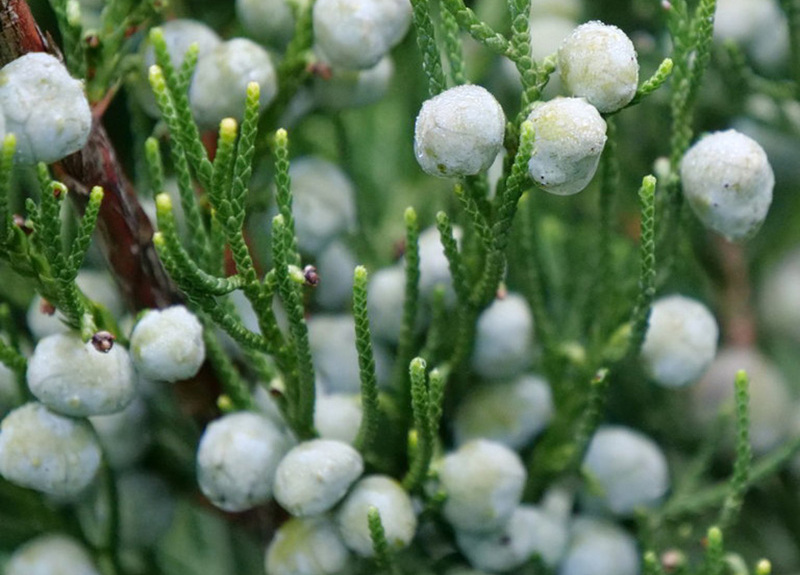Junipers are coniferous shrubs in the genus Juniperus of the cypress family Cupressaceae. Roughly 50 to 70 species of junipers exist all over the world. Junipers range from tall trees to low growing ground cover shrubs. Juniper are winter hardy to growing zones 3 to 9. The shrubs we offer can grow from 6 inches to 12 feet tall depending on the plant.
Planted in locations that get full sun, Juniper plants are fantastic as ground covers, in garden planters, mass plantings, privacy hedges, borders and ornamental plants.

Planting Juniper Bushes
Juniper bushes can thrive in any type of well draining soil, but do best when planted in a location that gets full sun. The best time to plant this bush is in the spring or fall, when temperatures are mild. Depending on the variety of Juniper that you choose, or how you will use it, will determine how far apart to space the plants. Good spacing between plants ensures good air circulation which helps to prevent fungal diseases.
Plant in a hole that is 2-3 times wider than the root ball. The top of the root ball should be a bit higher than the ground around it. Fill the hole with loose soil and pat down gently. Water well and again 1-2 times a week until established.
Watering Juniper Bushes
Once established, Juniper bushes require little to no supplemental watering. They are more likely to get diseases from overwatering rather than underwatering. Newly planted bushes will need watering every week or two until the roots have developed. During extremely hot or drought conditions, it is best to keep the soil moist.

Fertilizing Juniper Bushes
Juniper bushes are easy to care for and need little to no supplemental fertilizing. If you wish, during the spring, you can apply an all-purpose slow release fertilizer. Follow the package instructions and spread around the root zone. Water thoroughly to avoid fertilizer burn.
Pruning Juniper Bushes
If you provide enough space for your Juniper to grow to its mature size, then no pruning is needed. Juniper bushes can be pruned to remove damaged branches or to achieve a desired shape. Pruning during the spring is recommended. When pruning, refrain from using hedge trimmers. It is best to trim the bush branch by branch.
When pruning any Juniper bush, avoid cutting back to a point of bare wood (beyond green foliage on branches or stems.) Plants can be damaged beyond repair.

Caring For Juniper Bushes in Pots
Your Juniper Bush should be planted in a pot that is 8 inches or more in diameter than the root ball of the plant. This allows for 2-3 years of growth. Use a good quality potting soil or potting mix to help with drainage. Junipers like moist yet well-drained soil. Be sure that your container has drainage holes in the bottom. Soggy soil can cause root rot or other diseases.
Winter Care for Juniper Bushes
Juniper shrubs and trees are winter hardy and drought resistant. Many Junipers can easily withstand extremely cold winters and do not require extra care. Some Junipers can be subject to winter burn. If you notice the tips of a tree’s branches begin to brown and then progressively brown toward the center of the plant, this could be winter burn.
To avoid winter burn, give your shrub extra watering during the fall so the plant can store moisture for the winter. Add extra mulch to help store water in the soil. You can also wrap the shrub in burlap to help protect it from the harsh winds and snow.

Plants We Recommend
Common Juniper Bushes Care Questions
Why Do Juniper Bushes Turn Brown?
Some juniper bushes can turn brown, from the outside edges moving inwards, because of damage from winter weather, winter burn. This can sometimes be helped by giving them some extra water during the fall months, to make sure they're well hydrated and not going to be dried out by harsh colds and winds. Covering the roots with some mulch will help hold the moisture in and wrapping them with burlap in regions with extreme conditions will be helpful, also. Browning of juniper can also be caused by too much or not enough water, or even dog urine.
There are a couple of diseases (blight and root rot) and pests (scale and spider mites) all of which, left untreated, can be fatal to a juniper.
Do Junipers Flower?
Junipers do bloom, but the flowers are tiny, unremarkable, and often go unnoticed.
What Is The Growth Rate For Juniper?
There are so many varieties of junipers, and their growth rates definitely vary, but they are most often slow to moderate growers. The ground cover and shrub varieties can grow around 6-8 inches a year, while many others grow up to a foot, in the same time period.
How Do You Care For Juniper Bonsai?
Juniper bonsai trees prefer moist, but not wet soil, well-draining soil. They'll also do best with at least 3 hours of direct sunlight and bright light the rest of the day if they're indoors. If they're outside, put them somewhere protected from the wind and in light shade. When you're nighttime temperatures are starting to fall below 40 degrees, it's time to bring them indoors.
How To Grow Juniper?
Juniper bushes are very easy to grow and also extremely low maintenance, needing only sun and water. Once the roots are established, they are very drought tolerant.
How Big Does A Juniper Bush Get?
Juniper bushes vary in size, depending on the variety, and can be anywhere from 6 inches to 20 feet!
Have a question about Juniper Bushes? Fill out the form below and we will try and get back to your question as soon as possible. We may even feature your question on this article to help other gardeners!
 |
Author Chris Link - Published 6-18-2021 |
